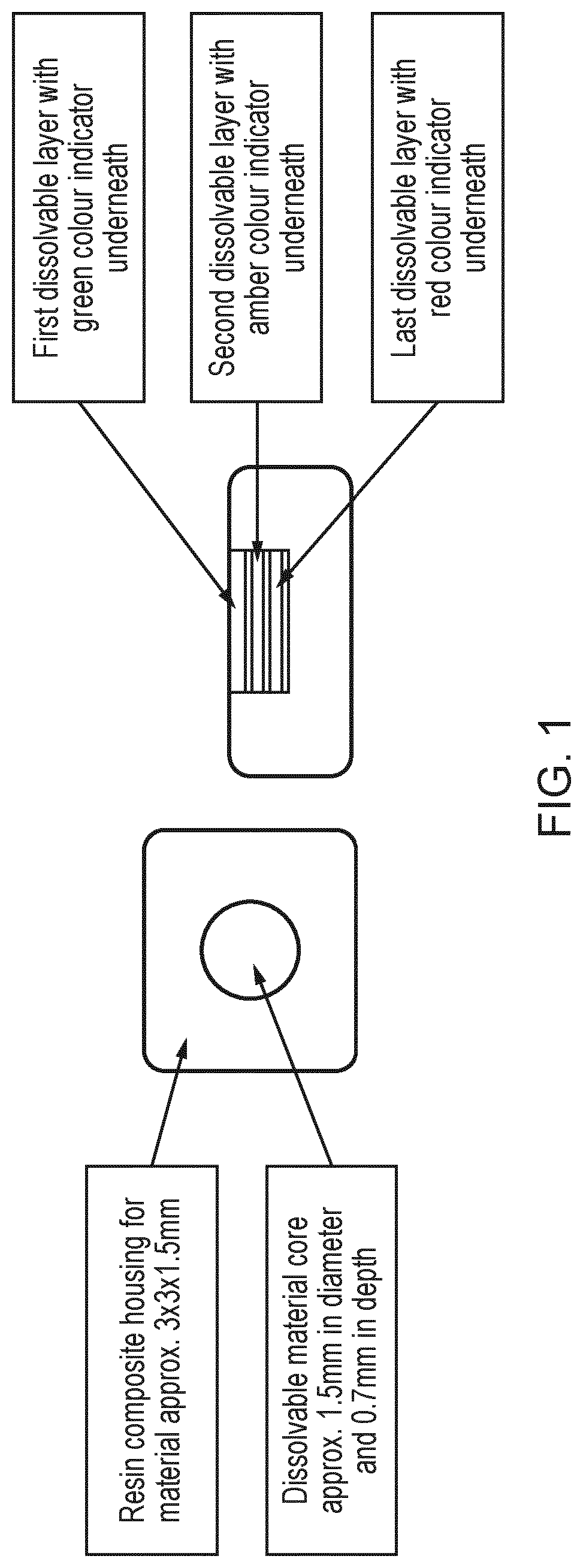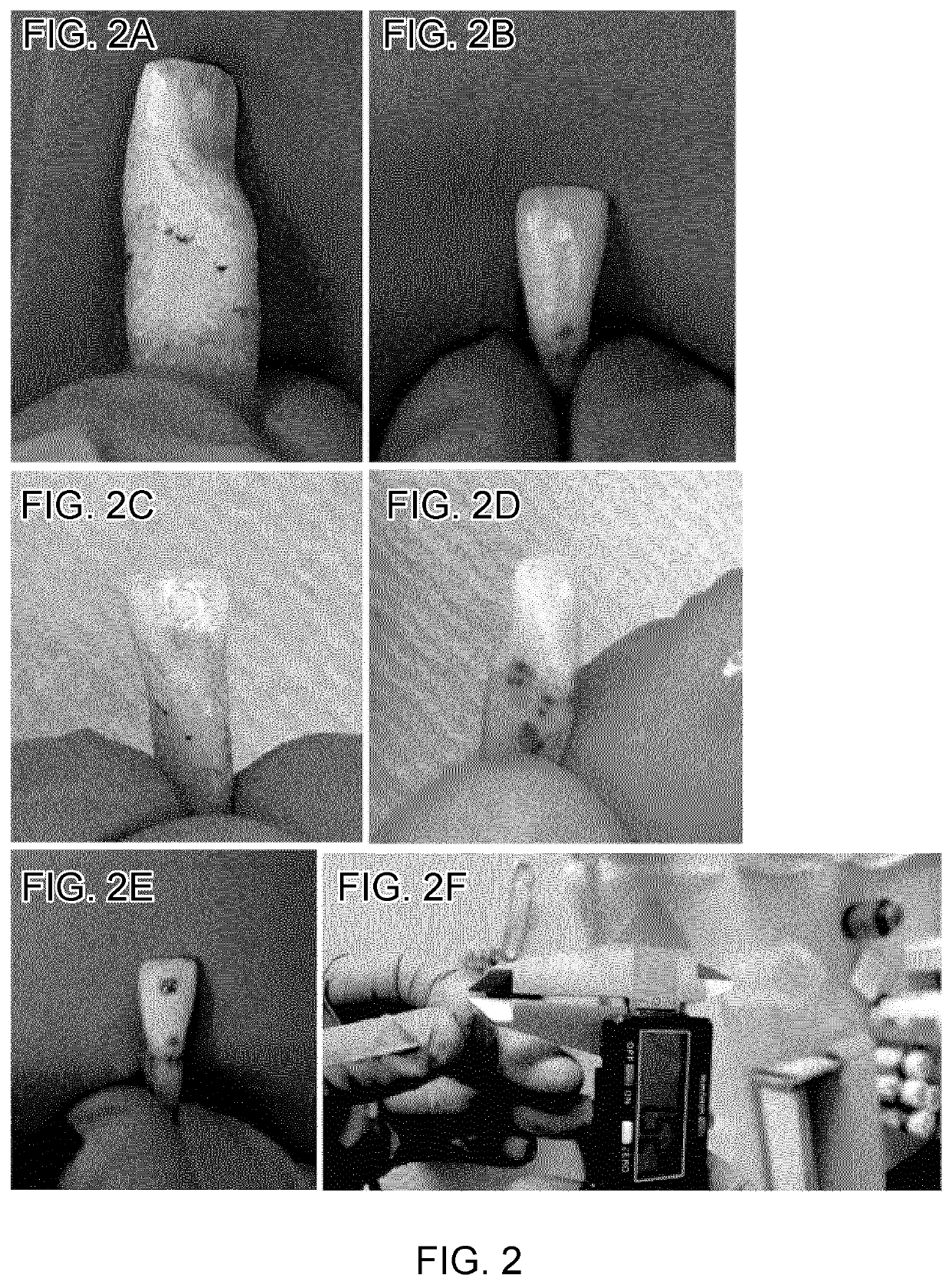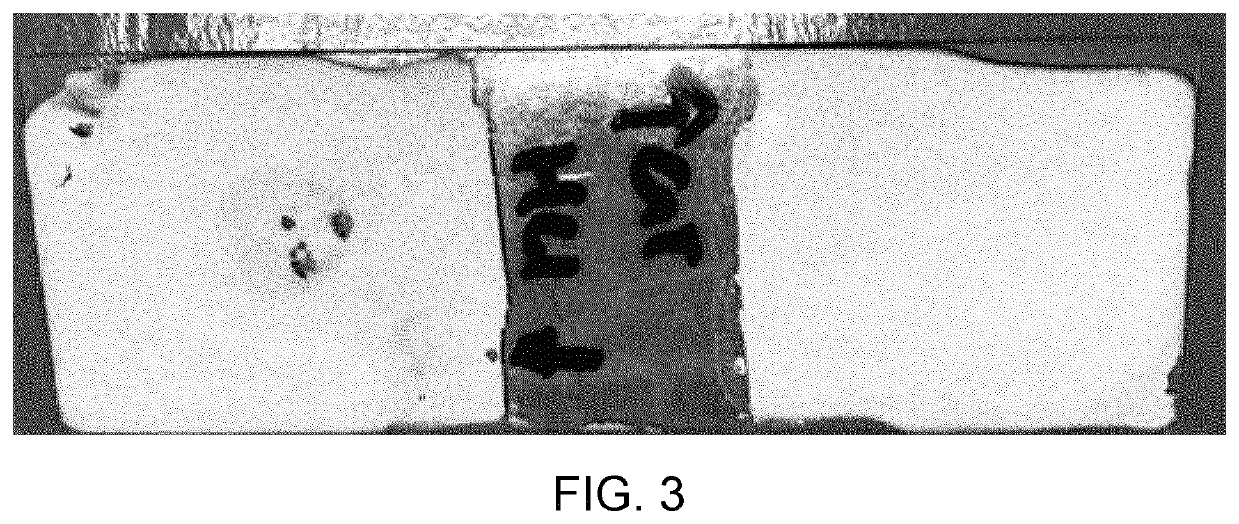Devices and methods for the detection of intraoral acid exposure
a technology of intraoral acid and detection device, which is applied in the field of non-invasive intraoral devices and methods, can solve the problems of no other approach in primary, secondary or tertiary care, and achieve the effect of improving the accuracy of the detection results
- Summary
- Abstract
- Description
- Claims
- Application Information
AI Technical Summary
Benefits of technology
Problems solved by technology
Method used
Image
Examples
example 1
the rate of profilometric loss and surface roughness changes of natural enamel, HA and β-TCP
[0225]Natural human molar samples (n=20) were collected (REC ref 12 / LO / 1836) and the buccal surfaces sectioned using a water-cooled diamond wafering blade (XL 12205, Benetec Ltd., London, UK) at a speed of 300 rpm and force of 150 g. Fully dense crystalline calcium phosphate discs of hydroxyapatite (HA) (blue, 12×2 mm, Plasma Biotal Limited, Derbyshire, UK) and beta- tricalcium phosphate (β-TCP) (white, 10×2 mm, Plasma Biotal Limited, Derbyshire, UK) were also sectioned into four pieces creating twenty 3 mm wide samples of each material. The enamel, HA and β-TCP quarter pieces were placed into custom-made silicone moulds (size 5 mm×2.5 mm×2 mm) and embedded in self-curing acrylic repair material (liquid and powder (cadmium free) , Oracryl, Bracon, East Sussex, UK) leaving the outer surface exposed. HA and β-TCP samples were polished using successively finer silicon-carbide discs (Versocit, St...
PUM
 Login to View More
Login to View More Abstract
Description
Claims
Application Information
 Login to View More
Login to View More - R&D
- Intellectual Property
- Life Sciences
- Materials
- Tech Scout
- Unparalleled Data Quality
- Higher Quality Content
- 60% Fewer Hallucinations
Browse by: Latest US Patents, China's latest patents, Technical Efficacy Thesaurus, Application Domain, Technology Topic, Popular Technical Reports.
© 2025 PatSnap. All rights reserved.Legal|Privacy policy|Modern Slavery Act Transparency Statement|Sitemap|About US| Contact US: help@patsnap.com



